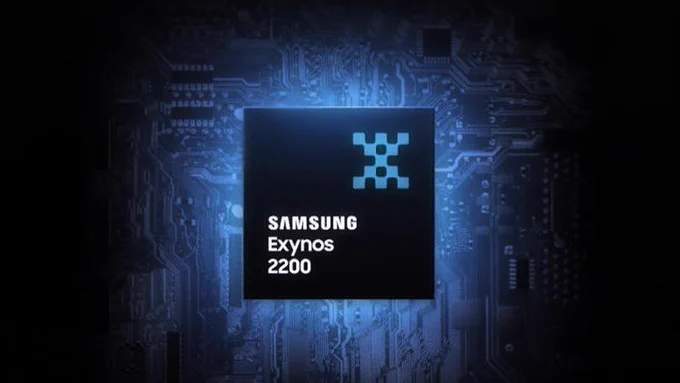Exynos had annoyed people with its thermal management issues and relatively inferior performance for a long time. Samsung finally decided to go 100% with Qualcomm for their flagship devices, starting from the Galaxy S23 series.
But this era of using Exynos exclusively isn’t going to last much longer. Company officials have revealed that they are considering re-adopting their previous dual-platform strategy, and there’s a good reason why Samsung continues the development of Exynos. The Executive Vice President of System LSI said, ‘We are pushing for the return of Exynos to the flagship of the Galaxy series.’
Exynos chips are set to make their way to the fan edition even before the Galaxy S24 series. Initially intended for the S23 lineup, the S23FE was supposed to be powered by the Exynos 2300 chipset. However, the S23 series didn’t receive the chip for obvious reasons, and it won’t be featured in the S23 FE either. So, will it use last year’s chipset?
Galaxy S23FE with last year’s Exynos 2200
Galaxy S23 FE will be powered by last year’s Exynos 2200 chipset in Europe and South East Asian countries, alongside the 8 Gen 1 model in the US and China.

Why last year’s chipset?
While there’s no official word on the reason behind the decision, it’s safe to say that the Exynos 2300 isn’t ready yet to meet expectations.
Significantly, in this context, we have seen the Exynos 2300 running on a mysterious device. It’s proof that the Exynos 2300 is present, but probably still under development. And this perfectly aligns with what Samsung said; they will take the time and come up when it’s ready to compete with the competition.
They have already skipped the S22 FE, which many people were waiting for, and it’s better not to skip the 4th fan edition either, at least for the sake of consistency. So, they have decided to continue with last year’s chipset this time.
Will the device lack in performance?
It’s important to note that Exynos wasn’t mainly held back by raw power, and the Exynos 2200 wasn’t an exception either. It was the lower power efficiency of the chipset and consequent performance drops due to thermal throttling.
However, if you are a bit worried about the power efficiency and sustained performance of the Exynos 2200, you may ask the same question as we did –
Is the 8 gen 2 powered Galaxy S23 still a better choice than the S23 FE?
Aside the performance, the Galaxy S23 in better than the S23 FE in almost every aspect which I have discussed in the article I linked above.
Now coming back to the Fan Edition, the S23 FE is reportedly getting an improved heat dissipation system that is expected to help with the thermal management of the S23 FE.
Additionally, the Exynos 2200 is not only their best offering right now, but is also greatly improved from the fiasco for Exynos 990, which was the biggest reason why people don’t want Exynos anymore. In other words, Exynos 2200 isn’t an inferior piece of silicon for the S23 FE.
Since Samsung ditched the custom Mongoose CPU architecture from Exynos 2100, things started improving slowly. But it’s lately been reported that Samsung is working on a custom CPU core design for future chips, which will mostly be ready in 2027.
The performance might have been improved
Let’s start off with a real-world example. The Snapdragon and Exynos variants of the S22 series had the exact same cores and were also fabricated using the same foundry process. However, there were some differences in the maximum allowed frequencies of the cores. This doesn’t matter until the cores attempt to hit the maximum limit, and they don’t do so often in a battery-powered device.
But there was still a noticeable difference in performance and especially in heating. The reason is the difference in core utilization in the two different chipsets, where Qualcomm was obviously better.
It has been more than a year since Samsung’s Mobile Experience (MX) division started working on core utilization for their upcoming Galaxy-exclusive AP. This initiative aims to manage tasks more efficiently. They have definitely learned a thing or two about how to improve efficiency by enhancing the CPU governor, and it should make its way or at least leave an influence on the Exynos 2200 as well, thereby improving power efficiency.
The image below shows the Geekbench scores of the 8 Gen 1 and Exynos 2200 variants of the S23 FE. The Exynos 2200 chipset is seemingly catching up to its Snapdragon counterpart. Hopefully, it performs well in real-life use cases too.

A more efficient process node would surely help with thermal management, but the Exynos 2200 wouldn’t lack power for powering the S23 FE, that’s for sure.
When will it arrive and should you wait?
The S23 FE is set to launch in Q4 2023. So, the launch is imminent. But, as I have said, even the old Galaxy S23 seems to be a way better choice considering the only slight proce and huge performance and quality gap.
However, if considering the Galaxy S23 seems a bit questionable to you for it’s age, you may note that the Galaxy S24 is only months away and it brings the best performance on a Samsung device along with improvements in build and design.
And I think it’s now reasonable to ask – Should you buy the Galaxy S23 FE or wait for the Galaxy S24?


